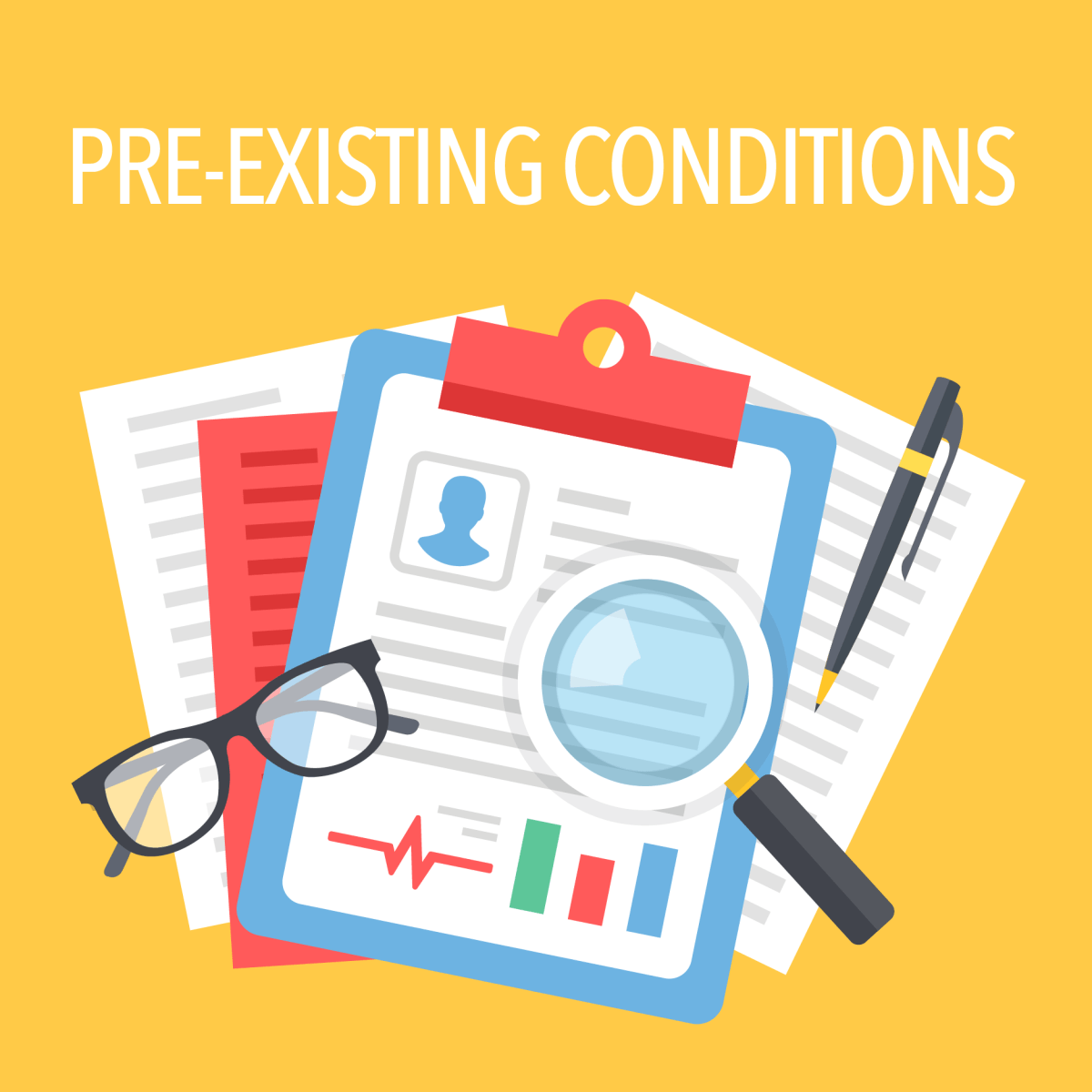Health Insurance for Pre-Existing Conditions
Health insurance is essential for protecting yourself and your family from unexpected medical costs. However, the issue of pre-existing conditions can cause confusion and concern for many people looking for coverage. A pre-existing condition is any health condition that existed before you applied for a new health insurance policy. These conditions can include a variety of issues, from chronic diseases like diabetes and asthma to conditions like cancer, heart disease, or even past surgeries. This article will explore how pre-existing conditions affect health insurance, the history of coverage for pre-existing conditions, and the options available for individuals with such conditions.
What Is a Pre-Existing Condition?
A pre-existing condition refers to any medical condition that you had before you applied for health insurance. These conditions can be diagnosed by a healthcare professional or even self-reported. Examples of pre-existing conditions include:
- Chronic diseases: Conditions like diabetes, asthma, and hypertension.
- Heart disease: Previous heart attacks or surgeries like bypass operations.
- Cancer: Past or ongoing treatments for cancers such as breast cancer, lung cancer, or leukemia.
- Mental health disorders: Including conditions like depression, anxiety, or schizophrenia.
- Injuries or surgeries: Previous surgeries or serious injuries may also be considered pre-existing conditions, even if they have healed.
The nature and impact of these conditions vary greatly. Some individuals may have controlled conditions that require minimal treatment, while others may need ongoing care or even hospitalization.
History of Health Insurance and Pre-Existing Conditions
For many years, health insurance companies could deny coverage or charge higher premiums to individuals with pre-existing conditions. This practice created significant barriers to access for millions of people, particularly those who had long-term or chronic health issues. Insurance companies argued that covering people with pre-existing conditions increased their financial risk, as they were more likely to require expensive medical care.
However, this changed in the United States with the Affordable Care Act (ACA), signed into law in 2010. Before the ACA, people with pre-existing conditions could be denied coverage or forced to pay higher premiums. The ACA addressed this issue by banning insurance companies from denying coverage to individuals with pre-existing conditions or charging them higher premiums. This law also created health insurance marketplaces where people could shop for plans that cover pre-existing conditions.
While the ACA made significant strides, the rules around pre-existing conditions vary by country, and some regions have not implemented similar protections. Therefore, it is essential to understand how different health insurance systems handle pre-existing conditions.
The Impact of the Affordable Care Act (ACA) on Pre-Existing Conditions
The Affordable Care Act was a landmark piece of legislation that transformed health insurance in the United States, particularly for those with pre-existing conditions. Here’s how the ACA affected people with pre-existing conditions:
1. No Denial of Coverage
Before the ACA, insurance companies could refuse to offer health insurance to individuals with pre-existing conditions. Under the ACA, this practice is illegal. Health insurers are now required to offer coverage to everyone, regardless of their health history. This has made it significantly easier for people with pre-existing conditions to obtain and maintain health insurance.
2. No Higher Premiums
Prior to the ACA, insurers could charge people with pre-existing conditions higher premiums because they were seen as higher-risk clients. With the ACA in place, insurance companies are prohibited from charging people with pre-existing conditions more than they would charge a healthy individual. This makes health insurance much more affordable for people with chronic or long-term health conditions.
3. Essential Health Benefits
The ACA also requires that all health insurance plans cover a set of essential health benefits. These benefits include services that are crucial for individuals with pre-existing conditions, such as hospitalization, outpatient care, prescription drugs, maternity care, mental health services, and preventive services. These protections ensure that people with pre-existing conditions can access the care they need without being denied treatment or facing excessive out-of-pocket costs.
4. Access to Preventive Care
The ACA also ensures that preventive care is covered without any cost-sharing, meaning that individuals do not have to pay out-of-pocket for services like vaccinations, screenings, and wellness check-ups. This is particularly important for individuals with pre-existing conditions, as preventive care can help manage their health and reduce the risk of complications down the line.
5. The Insurance Marketplace
Through the ACA, individuals with pre-existing conditions can access health insurance through state-based health insurance marketplaces or HealthCare.gov (the federal marketplace). These marketplaces offer a variety of plans, many of which are subsidized based on income. The availability of these plans has given people with pre-existing conditions more options and has made insurance more accessible.
What About Medicaid and Medicare?
In addition to the ACA, there are other government programs in the U.S. that provide coverage for people with pre-existing conditions:
Medicaid
Medicaid is a joint federal and state program that provides health insurance to individuals and families with low income. Many states expanded Medicaid under the ACA, making it available to more people. Medicaid provides coverage for a wide range of services, including treatment for pre-existing conditions, at little or no cost. Medicaid is particularly helpful for low-income individuals who may struggle to afford private health insurance.
Medicare
Medicare is a federal health insurance program primarily for people aged 65 and older. However, individuals under 65 who have disabilities may also qualify. Medicare covers a broad range of services, including treatment for pre-existing conditions. People with pre-existing conditions can apply for Medicare as soon as they become eligible, and they will not be denied coverage due to their health status.
Health Insurance for Pre-Existing Conditions Outside the United States
While the Affordable Care Act transformed healthcare for people with pre-existing conditions in the U.S., other countries have their own systems and rules for covering people with health conditions. Here’s a look at how pre-existing conditions are handled in some other parts of the world:
Canada
In Canada, healthcare is publicly funded through a system known as Medicare. The Canadian healthcare system does not rely on private insurance, and all residents are entitled to healthcare coverage regardless of their health history. This means that Canadians do not have to worry about being denied insurance or charged higher premiums due to pre-existing conditions. Pre-existing conditions are covered under the country’s universal healthcare system.
European Union (EU)
In the European Union, countries typically provide universal healthcare through a combination of public and private insurance. Like Canada, the EU focuses on providing coverage to all residents, including those with pre-existing conditions. People with pre-existing conditions are not denied coverage, and they are generally not charged higher premiums. However, the specific rules and benefits can vary depending on the country, as each EU member state has its own healthcare system.
Australia
Australia has a publicly funded healthcare system called Medicare, which provides coverage for all citizens and permanent residents. Health insurance in Australia is available through private insurers, and people with pre-existing conditions cannot be denied coverage. Private insurers may have waiting periods for specific services related to pre-existing conditions, but they cannot refuse to cover these conditions altogether.
Challenges and Considerations for People with Pre-Existing Conditions
While health insurance has become more accessible for people with pre-existing conditions, there are still challenges that individuals may face. Some of these challenges include:
1. High Deductibles and Out-of-Pocket Costs
Even with coverage, people with pre-existing conditions may still face high out-of-pocket costs, including deductibles, copayments, and coinsurance. These costs can add up quickly, especially for individuals who require ongoing treatments or medications. It’s important to choose a health insurance plan that offers comprehensive coverage for your condition and minimizes out-of-pocket expenses.
2. Access to Specialized Care
In some cases, people with pre-existing conditions may need specialized care that is not always covered by insurance. For example, some treatments or medications may not be included in an insurance plan’s list of covered services. It’s important to carefully review your plan to ensure it covers the care you need, and you may need to work with your healthcare provider to explore alternative treatment options.
3. Long-Term Management
Managing a pre-existing condition often requires long-term care, and individuals may need regular check-ups, medications, and treatments. Health insurance can help manage these costs, but it’s important to plan for the long term and ensure you have access to consistent care.
Conclusion
Health insurance for people with pre-existing conditions has come a long way, especially in the United States, where the Affordable Care Act has provided significant protections. Today, individuals with pre-existing conditions have more options and better access to healthcare coverage than ever before. While challenges still exist, such as high out-of-pocket costs and limited access to certain services, the landscape has improved dramatically, making it easier for people with health issues to obtain affordable, quality care.
Whether you live in the U.S., Canada, Europe, or elsewhere, it’s important to understand your rights when it comes to health insurance and pre-existing conditions. Always explore all available options, from government programs to private insurance, to ensure you get the care you need without facing discrimination based on your health status.





